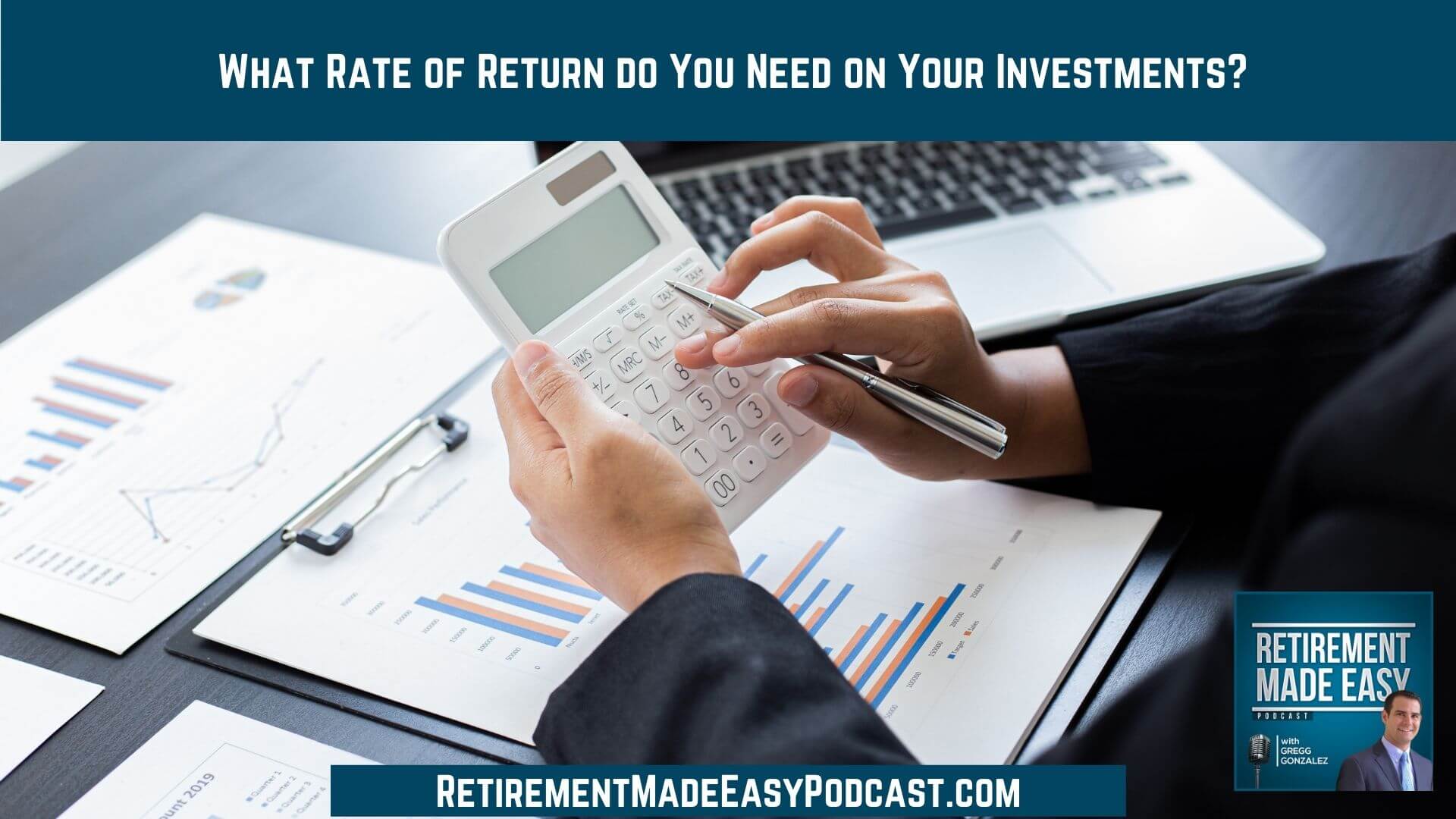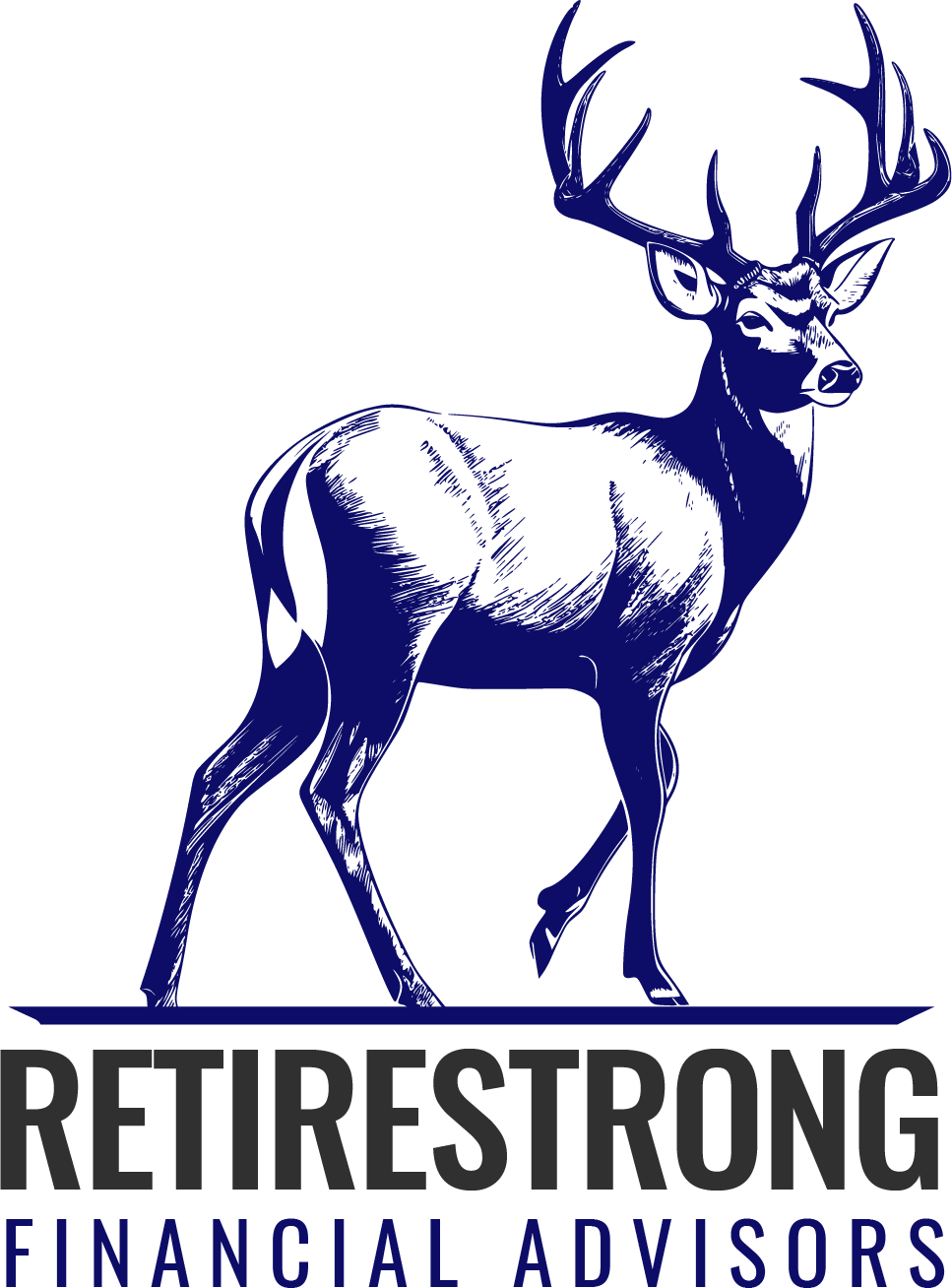
The average non-smoking 62-year-old couple has a life expectancy of 30 years (living until age 92). That means the average couple needs to plan for a 30-year retirement. So how do you calculate the Rate of Return (RoR) that you need to make on your investments to fully fund your retirement?
Calculating the RoR you need is one of the most crucial elements of retirement planning. You don’t want to find yourself out of money and living solely on social security in your late 80s. So in today’s episode of the Retirement Made Easy podcast, we cover why calculating your RoR is so important and a few simple ways to look at it.
You will want to hear this episode if you are interested in…
- [3:34] Check out RetirementMadeEasyPodcast.com for FREE resources
- [5:16] What rate of return do you need in your retirement portfolio?
- [8:15] What is the “tipping point” of your retirement plan?
- [10:15] Knowing the RoR you need directs your steps
What rate of return do you need in your retirement portfolio?
So what do we mean by RoR? Imagine you’re driving from New York to LA. What is your average speed over the trip? A 40 mph average for the trip gives you time to pull over, do some sightseeing, eat lunch, get gas, etc. But if we figure out that you need to make an average speed of 75 mph to get to LA on time—is that manageable at all? I don’t think so. I would tell someone they’d need to leave earlier so they can enjoy the journey.
Your retirement plan might say that you only need an average RoR of 3–5% per year. Are those numbers achievable? It all depends on how you invest your portfolio. What if you completed the assessment and it said you needed an average RoR of 9% per year? Based on my opinion, you’d have to wait to retire. You need to save more for retirement.
What is your RoR tipping point?
There is always a tipping point in these assessments. Your plan may look great at 5–6% and look horrible at 3–4%. Finding that minimum average rate of return that you need is absolutely crucial. If you find you just need to get a 6% return for the next 30 years—and your current savings will get you there—you’ll be golden.
It’s always best to do this analysis before you retire. What’s it gonna take to make your retirement the happy ending you deserve? Knowing the RoR you need to retire comfortably without worry is the most important piece of information you could ever discover. Remember, the goal of retirement is to stay retired—not return to work when you’re 85.
Knowing the RoR you need directs your steps
Let’s say that we’ve calculated that you need a 3.5% RoR for the next 30 years for your plan to succeed. Let’s say we did the same analysis at a 3% RoR and found that you ran out of money on your 85th birthday—and have to rely on social security. But if you hit that 3.5% RoR, you’d still have $1 million left at age 92. Wouldn’t that suggest that you need to invest with a goal of a 3.5% RoR?
If you knew CDs were paying 1–1.5%, you wouldn’t even consider CDs to be part of your portfolio to begin with. If money markets are paying 0.25—0.5% annually, that won’t help you achieve the 3.5% return that you need. A good financial planner can help you determine how to allocate your investments to get the RoR you need (and tell you whether or not you have enough saved to retire).
The bottom line is that you need to figure out how much gas you need to have in your tank to arrive at your destination so you’re never worried about running out. You want to get to your destination with ⅓ of a tank of fuel left over. If you still have money left over at the end of 30 years, you’ve won. You still have a cushion at the end that can be given to children, charities, or people or causes you care about.
Connect With Gregg Gonzalez
- Email at: Gregg@RetireSTL.com
- Podcast: https://RetirementMadeEasyPodcast.com
- Website: https://StLouisFinancialAdvisor.com
- Follow Gregg on LinkedIn
- Follow Gregg on Facebook
- Follow Gregg on YouTube



